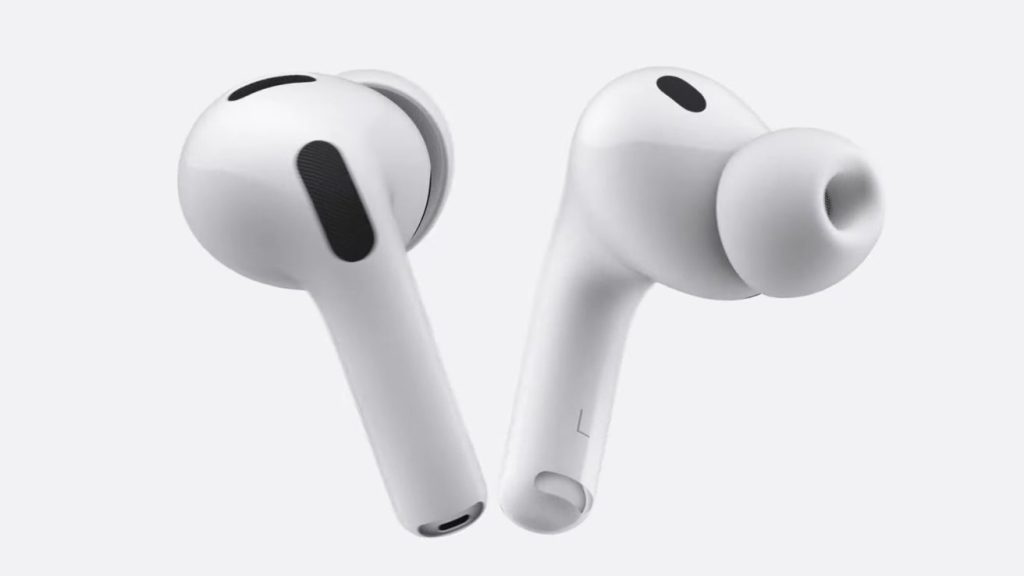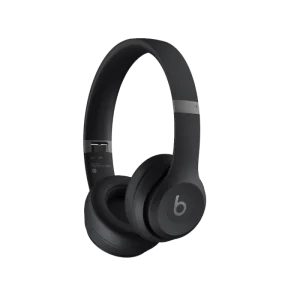AirPods Pro 3
The world’s best in‑ear Active Noise Cancellation.

“With AirPods Pro 3, the most popular headphones take a massive leap forward …” — Apple press release Apple
On September 9, 2025, Apple officially unveiled the AirPods Pro 3, scheduled for release on September 19. The Verge+3MacRumors+3What Hi-Fi?+3 Priced at USD 249, they bring a major upgrade in Active Noise Cancellation (ANC), improved fit, integrated health and translation features, and better durability and battery life—all without changing the entry-price point. Apple+3MacRumors+3The Verge+3
In this post, I’ll explore what these upgrades mean, where they push the state of the art, what leadership and innovation lessons we can draw, and what potential gaps or ethical implications remain.
What’s New & What Matters
Here are the key improvements in the AirPods Pro 3, especially as relates to noise cancellation, and why they are significant:
| Feature | What’s new / improved | Why it matters |
|---|---|---|
| ANC (Active Noise Cancellation) | Up to 2× more noise removed vs. Pro 2; 4× vs. the original Pro. The enhanced ANC is enabled by ultra-low noise microphones, advanced computational audio, and foam-infused ear tips for better passive isolation. Gadget Hacks+3Apple+3What Hi-Fi?+3 | Noise cancellation has been a key differentiator in premium earbuds. Doubling ANC means a much more silent baseline even before algorithmic suppression. Better passive sealing (via foam + tip sizes) reduces the energy and algorithmic load on ANC, which may improve battery life and reduce audio artifacts like distortion or ‘flutter’. |
| Fit & Comfort | Redesigned internal architecture: smaller pods, external geometry aligned to centre, five sizes of ear-tips (now including XXS), foam-infused tips. Based on extensive user-data (10,000+ 3D ear scans, 100,000+ hours of user research, ~300 million points of fit-data) Apple+2Gadget Hacks+2 | A better seal/passive isolation synergizes with ANC. Fit influences comfort, stability (especially during activity), and ultimately user adoption / satisfaction. Many previous models suffered “leakage” of noise or poor seal in certain ear shapes; wider tip sizes + ergonomic redesign help inclusivity of fit. |
| Battery Life | With ANC on: up to 8 hours on a single charge (vs ~6 in Pro 2). In Transparency mode: up to 10 hours. Apple+3What Hi-Fi?+3Apple+3 Case adds further listening time. Apple+1 | Longer battery life is often a trade-off with ANC. If Apple is delivering this without significant size/weight increase or heating, it’s a strong engineering achievement. For real-world users (commuters, flight travellers, open-office workers) more hours of uninterrupted silence or clarity make a difference. |
| Health & Fitness | For the first time, a built-in heart rate sensor (custom PPG sensor, infrared light pulses) enabling tracking during workouts, without needing a separate wearable. Also integrated “Workout Buddy” experience via Fitness app on iPhone. Apple+1 | Raises the category from purely audio to hybrid audio + health wearable. There are privacy, sensor accuracy, and ethical questions (e.g. for people with health conditions). Might reduce dependency on watches for some users. Enhances Apple’s ecosystem stickiness. |
| Live Translation & Smart Features | A new Live Translation mode (beta) allowing real-time face-to-face cross-language communication, supported initially in several languages, with more coming. MacRumors+2Apple+2 Also improvements in Transparency mode (more natural voice, personal voice preservation) and spatial audio enhancements. Apple+1 | Important for global users, travellers, multilingual teams. Translation via earbuds reduces friction. It also shows Apple pushing AI / on-device computational audio more deeply into small wearables. Spatial audio improvements enhance immersive media. |
| Durability & Design | Improved ingress protection: IP57 (dust and water/sweat resistance). What Hi-Fi?+2Apple+2 Foam tips + better stability design. Smaller pod profile. | Enables more active use (running, outdoors, perspiration, unpredictable weather). Wearables in Africa, other emerging markets especially benefit from durability. Fit plus durability = product with longer lifecycle, less waste. |
| Environmental & Accessory Changes | Foam-infused tips, USB-C charging case, case includes MagSafe, etc. But no charging cable included in box. Packaging is more sustainable. The Verge+2Apple+2 | Removing cables is eco-friendly and increasingly standard, though it poses small cost/trouble for first-time buyers or those without compatible cables. Good example of balancing sustainability and consumer convenience. |
What Does “World’s Best ANC” Mean — And What Should We Inspect
Apple claims that the AirPods Pro 3 deliver the “world’s best in-ear Active Noise Cancellation” among wireless earbuds. Apple+1 But in a technical and leadership / product innovation perspective, this claim needs to be understood carefully.
- Benchmarks & testing conditions: What kind of ambient noise (frequency spectrum, amplitude), what volume, which genres of noise (traffic, engine rumble, human voices)? Claims like “2× the previous model” assume specific test conditions. Differences in subjective perception may vary.
- Trade-offs: Stronger ANC may increase power draw, affect audio fidelity (phase issues, possible distortion), and may cause “ear pressure” discomfort for some users. Apple seems to mitigate this with better passive isolation (foam tips, fit). Usability under long durations will matter.
- Fit as key enabler: Many times users complain about leakage or poor noise isolation due not to the ANC algorithm, but due to poor seal. The expanded tip sizing + foam design may be the structural change that allows ANC improvements to be felt by more users. As a leadership lesson: hardware design + human anatomy data matter greatly in “sensor-heavy” wearables.
- Latency and computational audio performance: The speed and reliability of microphone sampling, audio DSP, response to changing ambient noise will define real user experience. Real-world performance (commute, office, open field) often reveals limits.
Implications for Leadership, Innovation & Emerging Technology Contexts
Ecosystem Strategy & Platform Leverage
Apple doesn’t just sell earbuds; they embed them in a broader ecosystem (iPhone, Fitness app, Apple Intelligence). The new heart rate monitor, the “Workout Buddy,” Live Translation, etc., are levered by software, AI, and data. For leaders, this underscores:
- The value of integrating hardware + software + AI for differentiating features.
- The power of user-data (ear shapes, usage, fit) to improve design via data-driven decisions.
- The potential edge for firms that design for both product performance and the socio-technical context (e.g. multilingual users, varied ear anatomies, physical activity).
Ethics, Privacy, & Inclusivity
Some ethical and inclusion issues to watch:
- Privacy / Health Data: Heart rate sensor implies collecting biometric data. How is that data stored, processed, secured? Which jurisdictions have oversight? Users must retain control.
- Accessibility: Expanded tip sizes and better fit help inclusion (smaller ears, more varied anatomies). Also, hearing-health features (Hearing Protection, Conversation Boost) are useful. Make sure translation, voice preservation, etc., support people with hearing or speech impairments.
- Language Equity: Live Translation starts with several widely spoken languages; more languages are promised. But equitable access for less frequently supported languages or dialects will be an issue.
- Environmental impact: Better durability and more recycled materials help. But removal of charging cable may disadvantage people who lack spare cables, particularly in areas where buying accessories is harder/expensive.
Innovation & Competitive Landscape
- With these improvements, Apple is pushing the bar for what high-end earbuds must do. Competitors like Sony, Bose, Samsung etc. will need to respond, not just on ANC, but on combining health sensors, translation, and fit.
- For the African context (where you work): battery life, durability in humid/hot/dusty climates, serviceability, and cost will be critical. If Apple maintains global availability and appropriate service support, this could shift standards locally.
- Also, there’s a trend of Earbuds becoming more “wearable devices” than purely audio. This device is an example: audio + sensor + AI + health + fitness. The boundary between “earbuds” and “wearables” will continue to blur.
What to Test / What Users Should Care About
Before declaring the AirPods Pro 3 as the “best” in absolute terms, these are real-world attributes people should test (or watch early reviews for):
- ANC performance in diverse real settings: on noisy buses/trains, busy streets, open-plan offices, wind. Does performance degrade at high or low frequencies?
- Comfort over long durations: whether the fit (new tips, foam) avoids ear fatigue / discomfort.
- Battery performance in practice, especially when using ANC + spatial audio + other sensors; whether advertised hours match usage patterns.
- Sensor accuracy: how reliable is the heart rate monitor compared to chest strap / watch? Also lag/delay and responsiveness.
- Translation feature usability: latency, accuracy, context (colloquialisms etc.). Also, whether it works well when ambient noise is present.
- Durability & maintenance: foam tips durability, resistance to sweat / water over time, case durability, replacement tip options and cost.
- Software stability and support: firmware updates, region-wise capabilities, whether features roll out as promised globally.
Potential Weaknesses & Challenges
- Feature parity in non-iOS / non-Apple ecosystems is likely limited; many features require Apple devices/software. This may limit adoption in mixed device settings.
- Despite improvements, highly demanding listeners (audiophiles) may still prefer over-ear ANC headphones or more customizable options.
- Removing the cable may be a hassle for some users in regions with limited USB-C cable availability or higher accessory costs.
- Pricing remains high in many markets when local currency, taxes, and import duties are added. So the perceived value depends heavily on local pricing and support.
Conclusion
AirPods Pro 3 represents a significant step forward in in-ear Active Noise Cancellation, fit, and wearable functionality. By integrating health sensors, translation, and improved fit + durability, Apple is shifting the expectations for what premium earbuds can do. For leaders, innovators, and scholars in emerging tech, AirPods Pro 3 is a study in how hardware, AI, user-data, and ethical / inclusive design coalesce to create value.
Whether they are the “world’s best” for every user will depend on individual needs, listening environments, and value trade-offs. But in multiple dimensions — ANC, fit, battery life, sensor-integration — they raise the bar.


